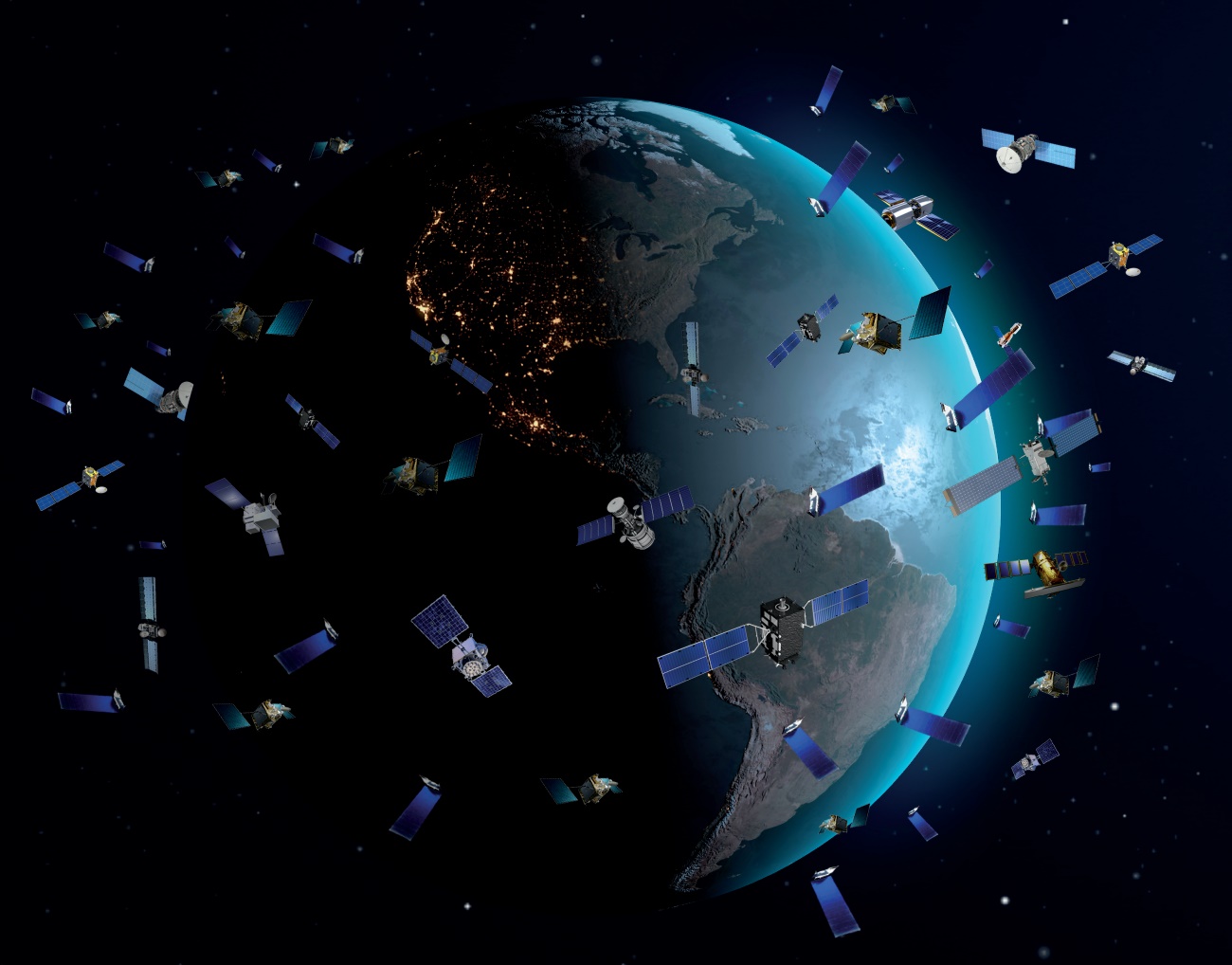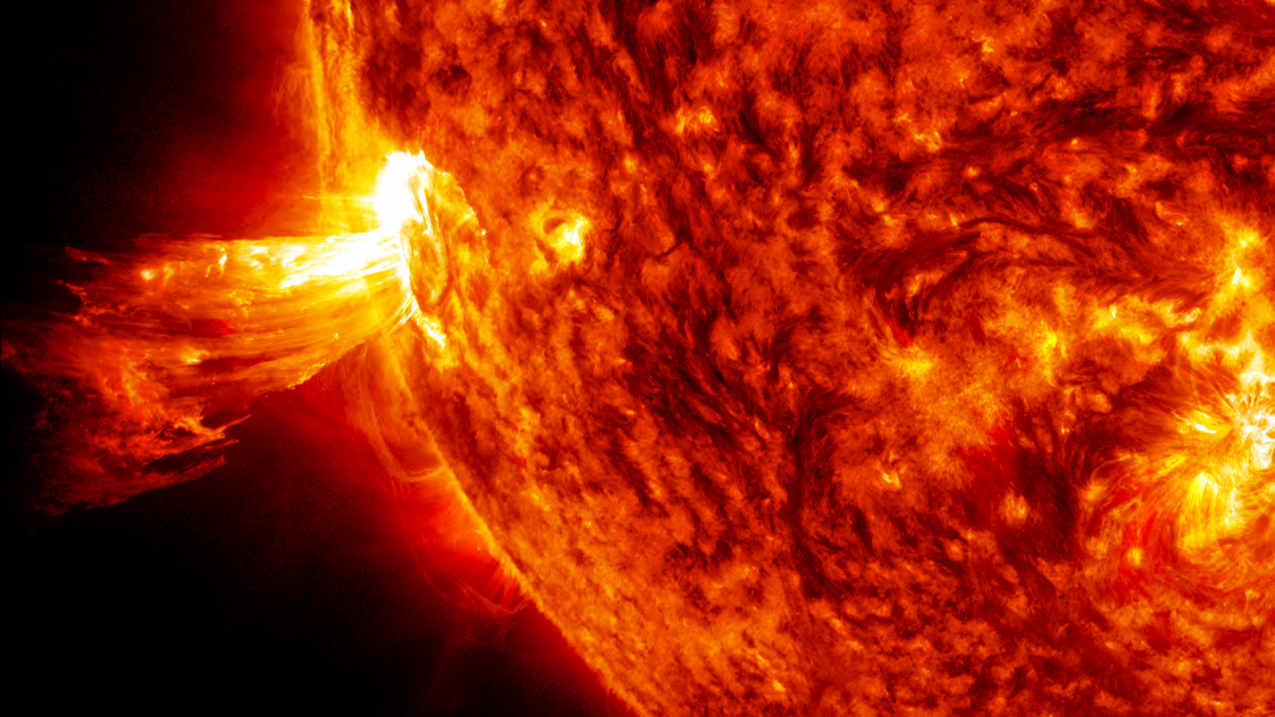Even outer space now succumbs to human pollution
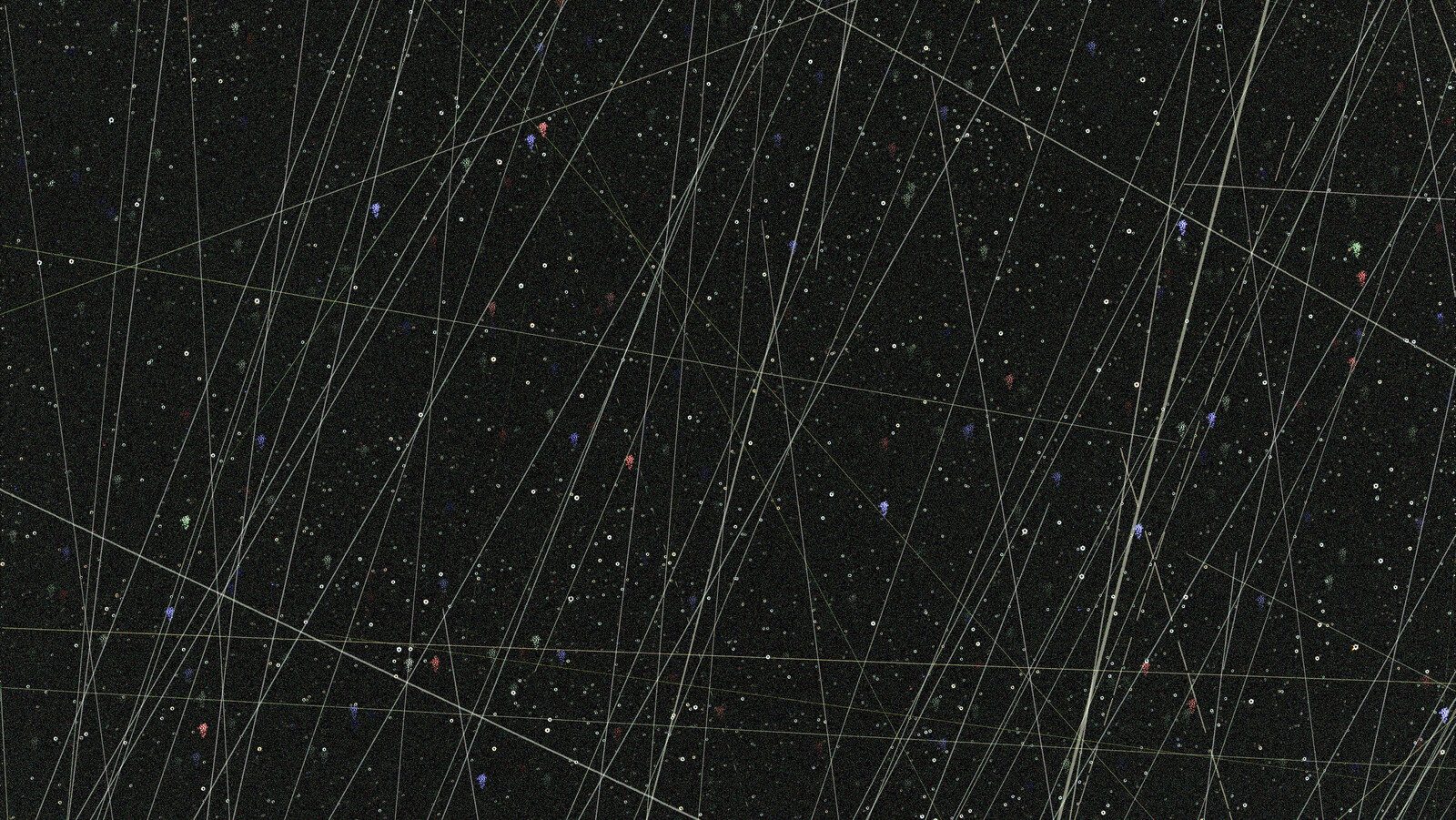
- Since 2019, the number of active satellites has exploded, from fewer than 2000 to nearly 10,000 now, with over half-a-million new satellites planned in the coming years.
- What was once the last unpolluted refuge of all the environments that affect planet Earth, outer space itself, is now teeming with pollution, with living creatures, including humans, facing the consequences.
- No, we can’t simply replace what we’ve traditionally done on Earth with doing it in space, and the consequences of “moving fast and breaking things” will persist for millennia. It’s time to act, now.
All throughout the history of humanity, we’ve had to reckon with the need to extract resources from our environment — food, water, materials for tools and shelter, etc. — while simultaneously avoiding polluting it to such an extent that we could no longer live there: a fate that many living organisms suffer from. The sizes of societies were limited, historically, by the ability to bring in sufficiently large stores of fresh water (until the development of technologies such as the aqueduct), and then by the ability to remove the waste products produced by the humans that inhabited them (until the development of sewers). In more recent times, we’ve had to concern ourselves with:
- producing enough food and distributing it to where people are,
- keeping the air we breathe clean enough to avoid poisoning our lungs and other organs,
- and keeping the water we drink clean enough to avoid serious illness.
Even as countless generations of humans faced problems such as these, there was always one place we could look to that was free of the pollutants brought about by human activity: outer space. Beginning in 1957, with the launch of Sputnik, that slowly began to change, as satellites soon became a routine part of our lives. The benefits of widespread telecommunications, global positioning systems, and satellite internet were felt by many across the globe, even as the numbers of active satellites approached 2000 as of 2019.

Then, in May of 2019, the first batch of Starlink satellites was launched: the first step toward humanity’s first satellite megaconstellation. Although this is routinely thought of as infrastructure, it’s also a tremendous source of pollution. As the number of active satellites now approaches 10,000 (with Starlink making up more than half of all active satellites) — and with more than 500,000 additional satellites already planned — it’s long past time to protect the space environment of Earth’s orbit. The skies belong to all of us, while most of humanity remains unaware of the long-term damage these new batches of satellites are already having on our world.
As human beings, our eyes are sensitive enough to see objects down to a magnitude of +6, corresponding to a few thousand stars. From 1957 through early 2019, only the brightest few satellites, such as the International Space Station or the Iridium satellite network, were visible to our eyes, with other satellites generally being too small and/or too far away to be detectable by our eyes. At radio frequencies, the spectrum was heavily protected, as satellites needed to avoid communications interference with important terrestrial sources and applications.
Alongside these regulations, ground-based astronomy thrived, as we could look to the Universe and see what was out there, exploring the vast recesses of the cosmos, and helping us better understand our place in the Universe.
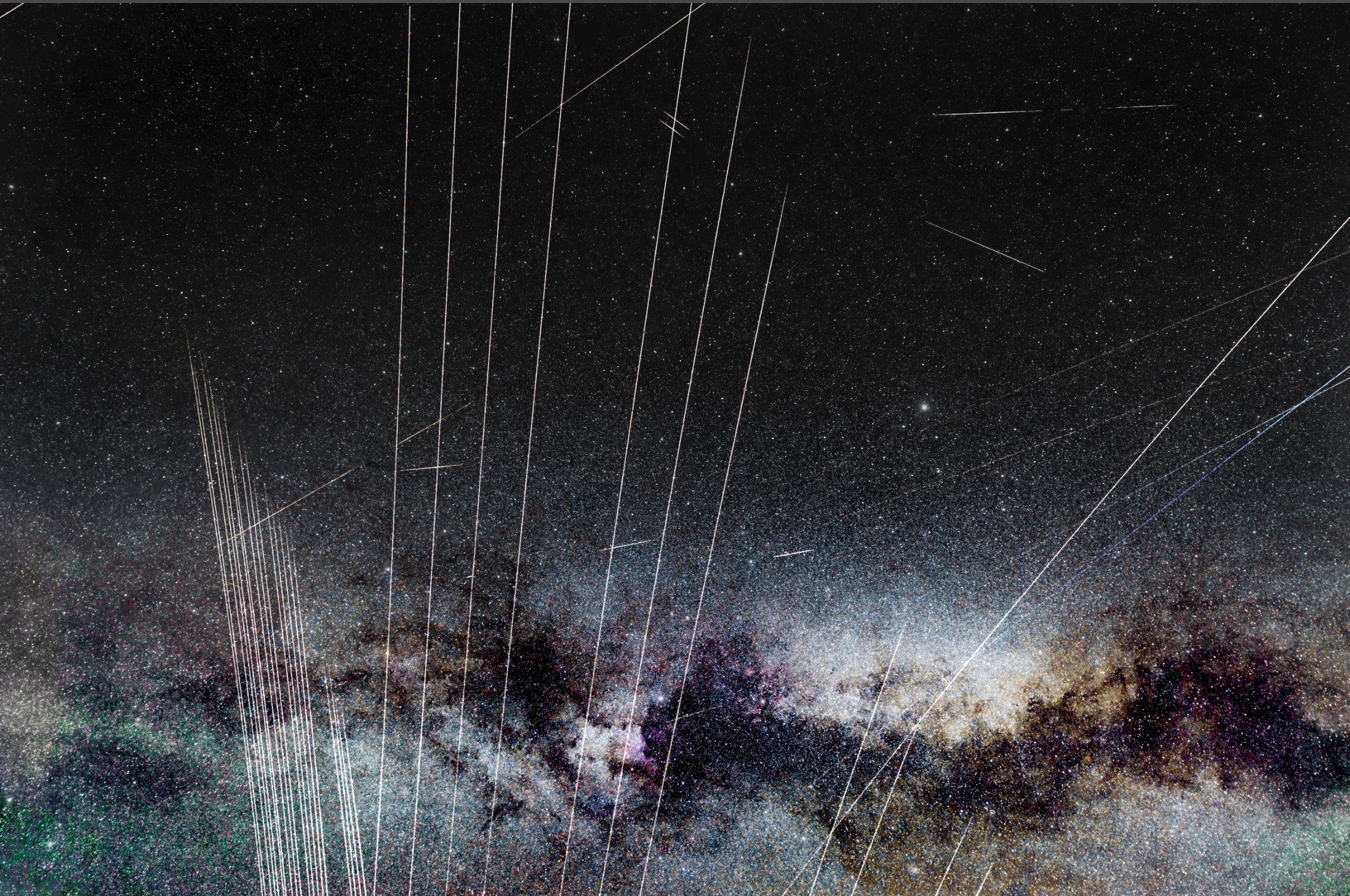
All of that, in the span of less than five years (at present), is now undergoing the most radical transformation in history. As of today, there are 9,413 active satellites in orbit around Earth, with 8,288 of them in low-Earth orbit, where they’re closest to Earth and appear brightest to our eyes, particularly in the ~3 hours just before sunrise and after sunset. 5,235 of them, or 56% of all active satellites, are active Starlink satellites: owned and serviced by one company. It’s important to note that, in low-Earth orbit, the important rule of “what goes up, must come down,” still applies.
This means that eventually, simply due to friction with the uppermost, tenuously held layer of Earth’s atmosphere — the exosphere — the orbits of these satellites will decay, and they will re-enter Earth’s atmosphere. When this happens, they will burn up in the atmosphere, and that means whatever they’re made of, including all of the heavy elements and toxic compounds present within them, will simply become additional pollutants present in our biosphere. While meteorites naturally add about 500 kg of aluminum to our atmosphere each day, on average, a single Starlink 2.0 satellite (the current generation) weighs in at 1250 kg, which is mostly aluminum. (Note: several hundred Starlink satellites have already re-entered the atmosphere.) This additional aluminum impacts all living creatures on Earth through:
- the additional seeding of clouds,
- changes to Earth’s reflectivity and heat-trapping properties,
- the destruction of stratospheric ozone molecules,
- and the disruption of atmospheric circulation at a variety of altitudes,
meaning we are already participating in a planet-wide geoengineering experiment that no one signed up for.

When it comes to the science of astronomy, many among the general public look at ground-based astronomy facilities as relics from the 20th century, made obsolete by the advent of space telescopes. While that itself is fundamentally untrue for a number of profound and compelling reasons, when astronomers complain about these satellites “photobombing” their astronomical targets, it’s not like sending telescopes to space is going to make them immune from these effects.
A recent study (from 2023) analyzed 20 years of Hubble Space Telescope data for satellite streaks, and found that:
- 2.7% of all images, with just 11 minutes of exposure time each, contained streaks,
- that the frequency of images with streaks increased with time,
- including a sharp rise beginning in 2020,
- and that with more satellites, this problem would continue to worsen.
Furthermore, some of the most cutting-edge science being done involves what astronomers call transient events: where objects rapidly brighten or fainten, many of which represent energetic and novel explosions and cataclysms in our Universe. This entire class of astronomy, known more broadly as time-domain astronomy, is already being radically affected by these satellites.
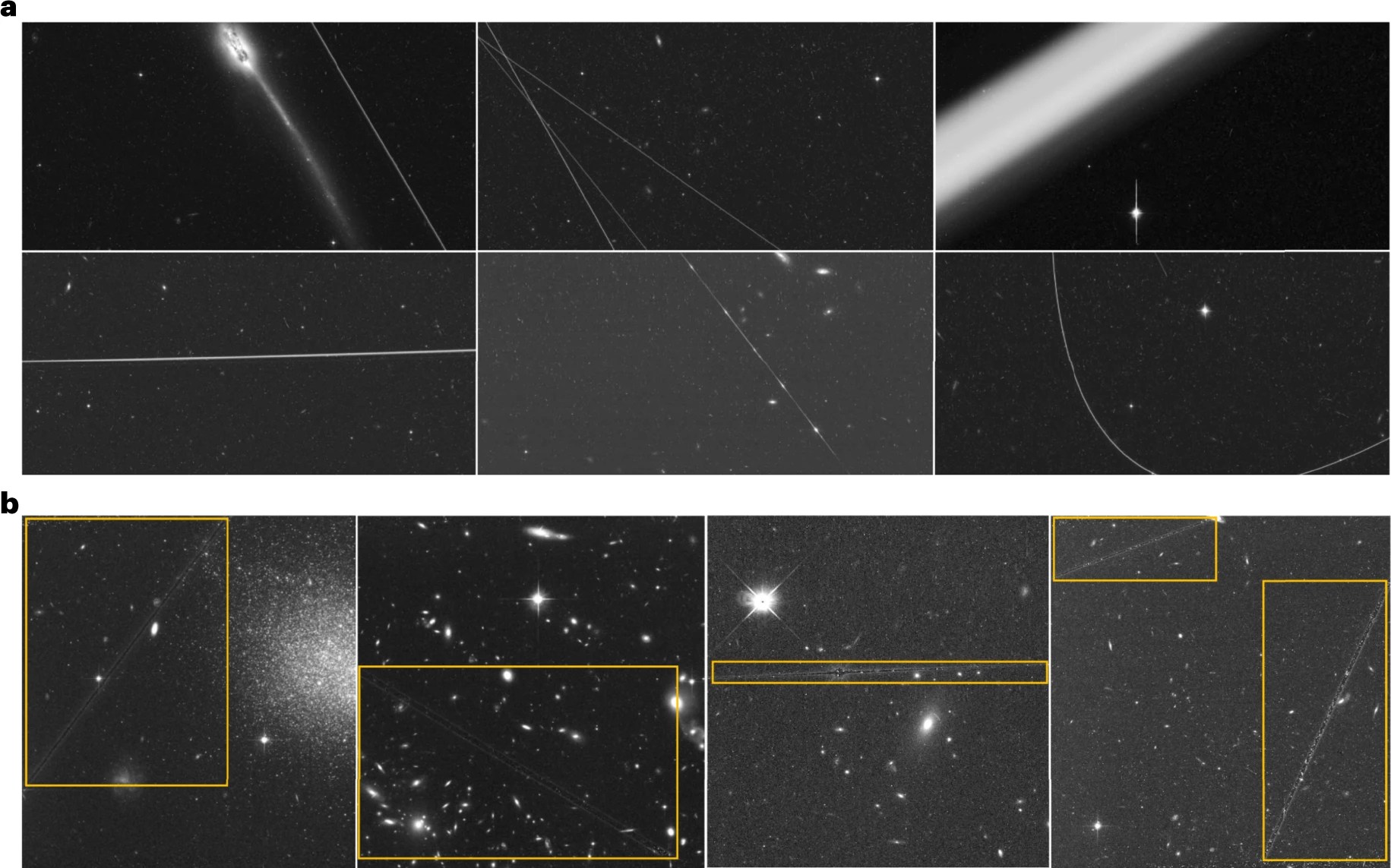
Take, for example, one of the 10 most distant galaxies known to humanity: GN-z11. This galaxy was discovered by the Hubble Space Telescope in 2015, and was the cosmic distance record-holder until late 2022, when the JADES collaboration, using JWST data, announced the first confirmed galaxy whose distance was greater. In 2020, astronomers reported a brilliant flash of ultraviolet light seen coming from that very galaxy while observing it with the Keck telescope and their MOSFIRE instrument: a suspected transient event that led to the tantalizing possibility that a gamma-ray burst, or perhaps even a supernova associated with the first generation of stars, had just occurred in the most distant galaxy known at the time.
Either of these explanations would have been revolutionary, as the nature of long-period gamma-ray bursts remains obscure and no first-generation star has ever been observed, much less the cataclysmic demise of such a star. But it wasn’t to be. Instead, the upper stage of a Proton rocket, launched in 2015, was likely the culprit, as this piece of space debris crossed the field-of-view of the Keck telescope at the pivotal moment, while 13,758 kilometers away from Earth and shining in direct sunlight. Satellite streaks don’t just confound our observations, they waste the time, effort, and money of experts, taxpayers, and the scientific community.
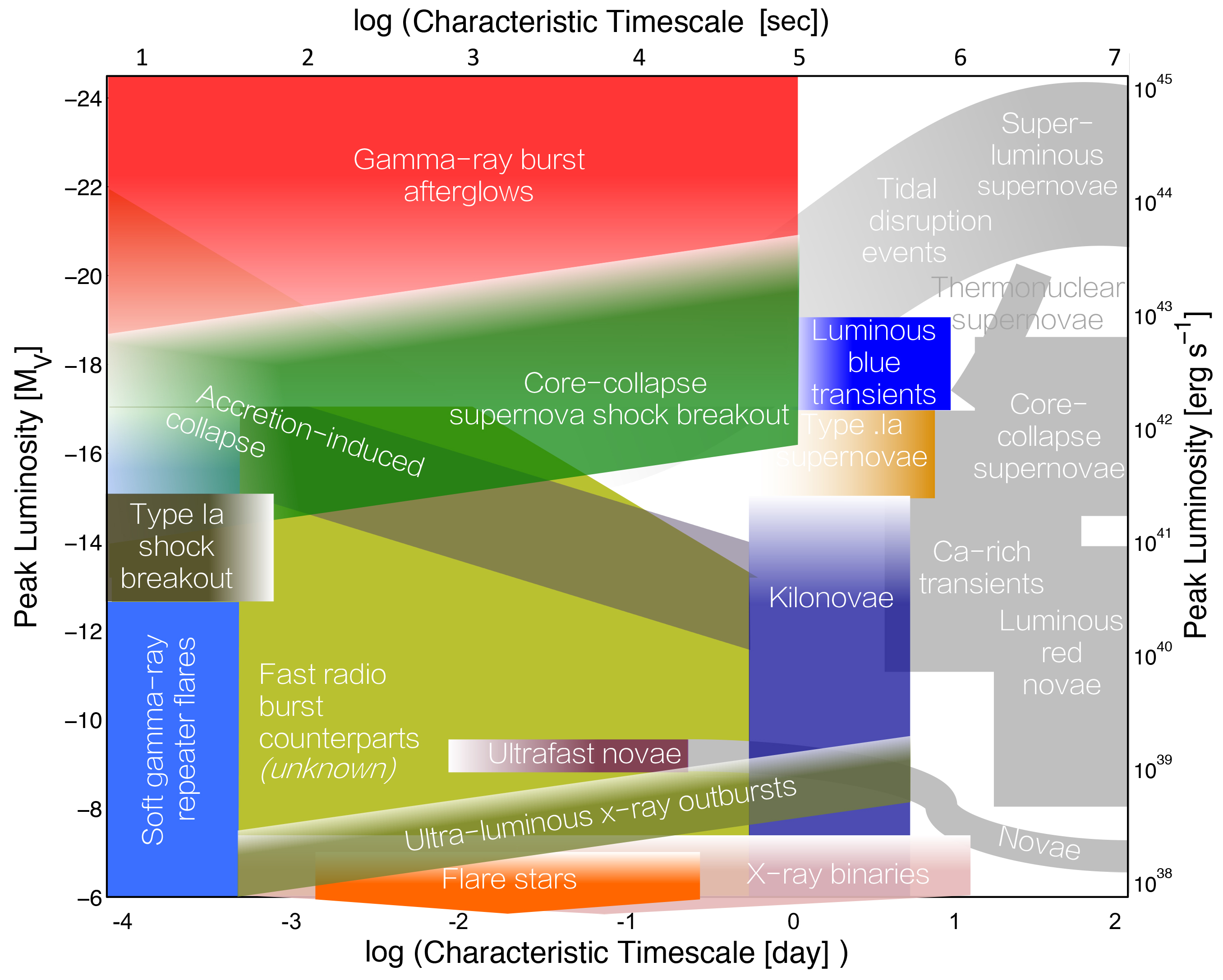
There’s also the idea that space is pristine, and that once you leave the confines of Earth, there’s just the vast abyss of emptiness to cross while you’re headed to your destination. But this is no longer true for a variety of reasons.
First off, in addition to the nearly 10,000 active satellites orbiting the Earth, there are also hundreds of thousands of pieces of space debris, ranging from large pieces (like rocket stages) to tiny chunks of former satellites that have unfortunately either failed, exploded, or (even worse) collided with one another.
The more satellites we send up, the riskier each and every launch becomes, including launches to places like the Moon or the L2 Lagrange point, as there’s no way to head out into deep space without passing through low-Earth orbit. Recent studies have highlighted that roughly once every minute, there are active satellites and/or large pieces of space debris in low-Earth orbit that pass within just 1 or 2 kilometers of one another, with typical encounter speeds between these objects reaching 15 km/s: around 33,000 miles-per-hour. An impact with a large piece of space debris would be catastrophic to any space mission, and with more objects in orbit, the risk of a chain reaction of collisions occurring once the first impact takes place — the nightmare scenario known as Kessler syndrome — only increases, and may be made inevitable the next time a major solar storm comes our way.
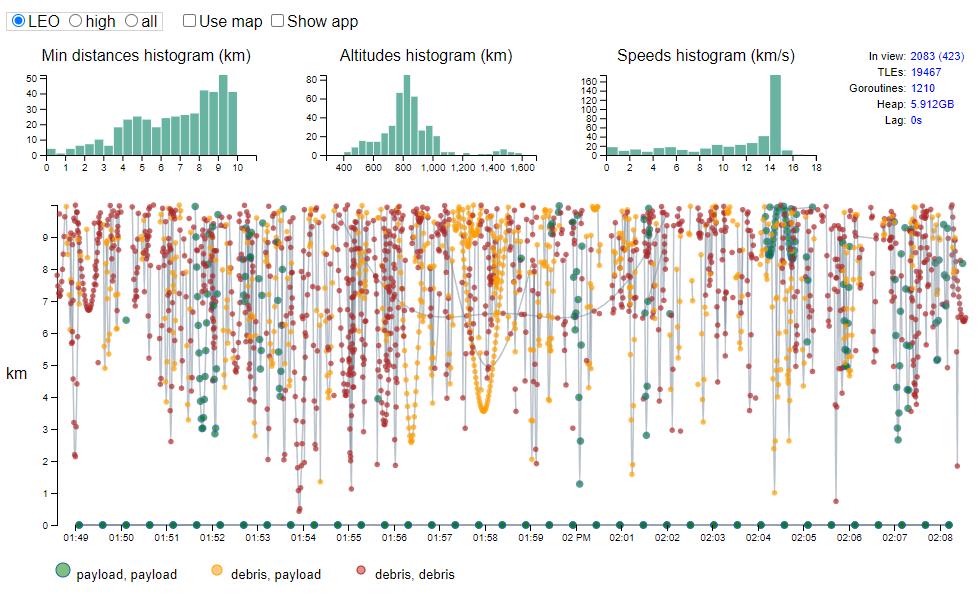
The radio part of the spectrum, used for everything from broadcasting to military communications to radio astronomy to the search for signals arising from extraterrestrial life, is particularly egregiously affected by this new generations of high-speed, low-latency internet satellites. There are a wide variety of radio frequencies in which one can observe or monitor, and interference is a major problem, which is why the radio bands are so thoroughly regulated.
However, a strong signal originating from one particular band in the radio can severely impact adjacent bands, as:
- signals, particularly strong signals, will bleed over into nearby bands, even if the signal is well-collimated,
- and detectors in nearby bands, even if the signal remains solely in its own frequency range, will pick up those signals if they’re strong enough.
For example, take a look at this radio astronomy image acquired by Dr. Yvette Cendes, who specializes in the deaths of stars, working with the VLA (Very Large Array), the flagship radio telescope network in North America.

The above image shows, in the center of the field, a fascinating source: it’s a star in the process of actively being shredded by a black hole, or what astronomers call a tidal disruption event. That image, taken in what radio astronomers call the C-band, clearly reveals the source, and will yield data that is easy to see how it changes with time as the cataclysm continues to unfold. Images such as these are expensive in terms of telescope time, requiring several minutes of telescope time just to reveal the source.
Ideally, however, astronomers observe in multiple frequency bands with the telescope time they are allotted, as different frequencies reveal different pieces of information about the sources being observed. Now, compare the image above with the image below, which was taken in 2023 on the same night, by the same astronomer, in the same region of sky that the above image was taken, except at higher frequencies: in the X-band. As even a cursory visual inspection will tell you, there is no useful data here: the observations are swamped by noise. And practically 100% of that noise is caused by, you guessed it, the swarm of (specifically) Starlink satellites orbiting Earth.

This affects not only radio and optical astronomy, of course, but all forms of astronomy, including infrared, ultraviolet, and any other wavelength emitted by the Sun and reflected by these satellites, or simply emitted from the satellites themselves, directly. The “streaks” that show up in images aren’t just photobombing the pretty pictures astronomers show to the general public, but obscuring all of the interesting astronomy occurring behind the streaks:
- stars,
- black holes,
- pulsars,
- magnetars,
- distant worlds,
and so much more. When we see a supernova, or any rapidly evolving event, timing is key: getting the right telescopes’ eyes on it, and fast. With thousands of satellites to reckon with, this is already a huge problem; with hundreds of thousands more on their way, we might not be able to get even one unobstructed view with present technology.
The situation is even worse for X-ray and gamma-ray astronomy, where every single photon contains meaningful data. Non-detections are similarly meaningful for these realms of astronomy. Whenever a satellite or a piece of (untracked) satellite debris glints in the sunlight, it will appear as a high-energy source, just as it did in 2020 for GN-z11. There are no foreseeable mitigations for this problem, which will only worsen as time goes on and more satellites are launched into orbit.
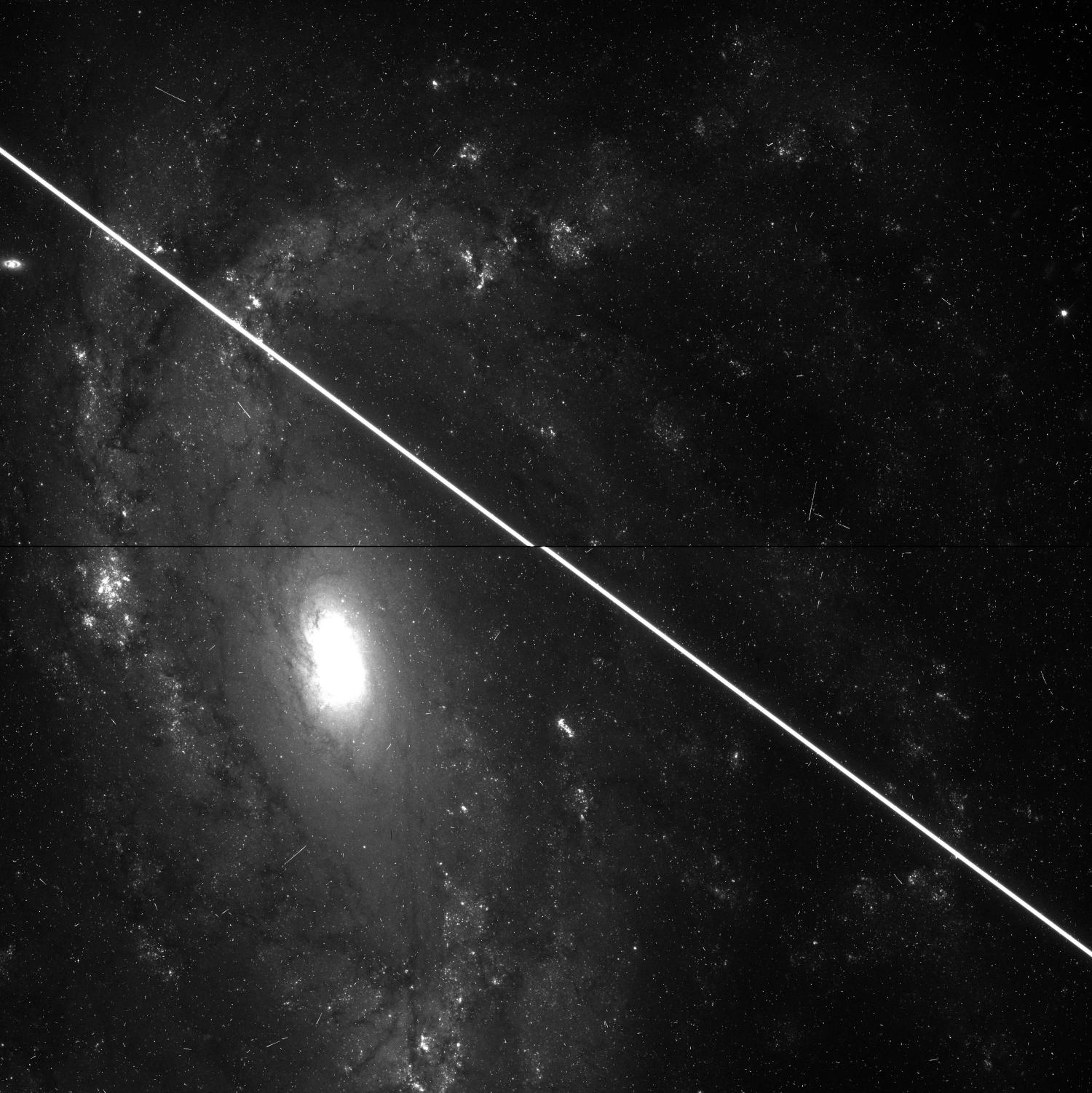
One of the big issues that surrounds scientific ethics is not just where or how to look at something, but also knowing when something needs to be left untouched. We have to be very careful, for example, that when we search for life on Mars, that we aren’t using tools that are contaminated with Earth-based organics in the process, or we run the very real risk of generating a false positive signal, which has likely happened in the past. Without hyperbole, the new era of satellite megaconstellations threatens not only to end astronomy as we know it, but to fundamentally transform Earth’s night sky and the environment surrounding our planet, and not for the better.
What’s really too bad, in all of this, is how unnecessary it is. We don’t need hundreds of thousands of satellite in low-Earth orbit to provide high-speed internet to everyone on Earth; we could instead:
- place the satellites 10 (or 100) times farther away,
- where each one would extend coverage to much more of Earth’s surface area,
- making them larger and more powerful to accommodate the increased signal,
- and for that, we’d need only 1/100th (or 1/10,000th) as many satellites,
while still serving the same number of customers and the same amount of data. This plan is the reason why we have only 24 GPS satellites, and with them, we successfully serve GPS to the entire planet. The only sacrifice is a tiny amount of latency: 40 milliseconds for an array of satellites at 6,000 km altitude, as opposed to 4 milliseconds for an array of 100 times as many satellites at 600 km altitude. As Professor Samantha Lawler so passionately put it:
“Ask your government representatives to support satellite regulation, and expansion of rural broadband. Get out and enjoy your dark skies, before they change. With proper regulation, our oldest form of space exploration can continue. I desperately hope we never reach a point where the natural patterns in the sky are drowned out by anthropogenic ones, but without regulation, corporations will get us there soon.”
